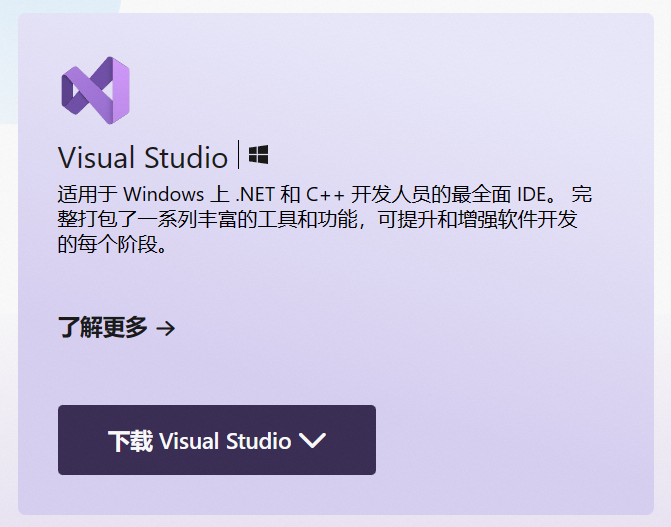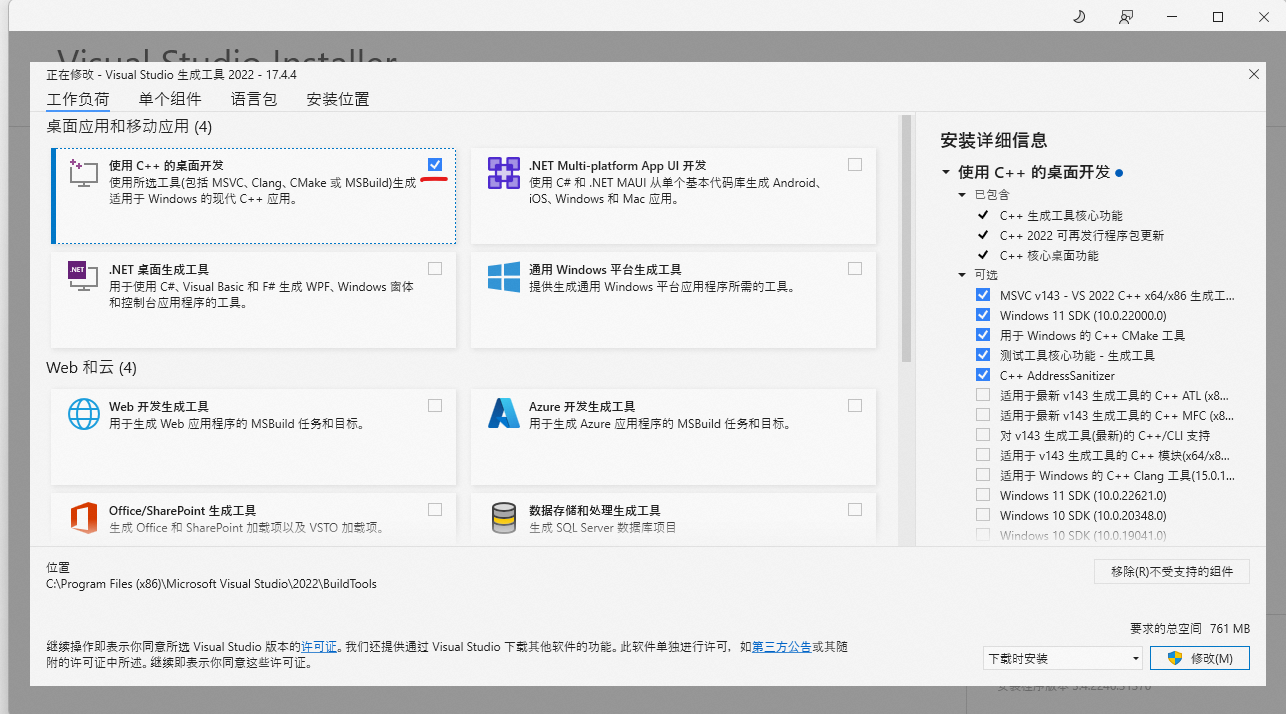安装cnocr
pip install cnocr |
安装很简单,但是我实际操作过程中出现了一些问题。具体就不说明了,最后解决办法是安装个软件。
Visual Studio: 面向软件开发人员和 Teams 的 IDE 和代码编辑器 (microsoft.com)
下载安装这个软件

打开运行后,勾选安装即可。

pip install cnocr |
安装很简单,但是我实际操作过程中出现了一些问题。具体就不说明了,最后解决办法是安装个软件。
Visual Studio: 面向软件开发人员和 Teams 的 IDE 和代码编辑器 (microsoft.com)
下载安装这个软件

打开运行后,勾选安装即可。
